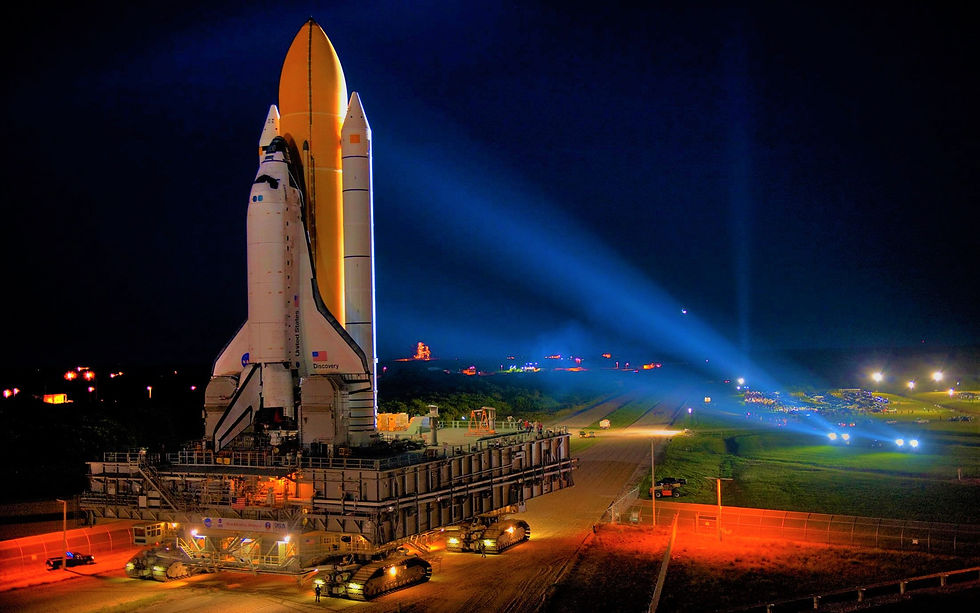The Big Bang
- pilot55kassas55
- ٢٠ يوليو، ٢٠٢٢
- 3 دقيقة قراءة
Astronomers combine mathematical models with observations to develop workable theories of how the Universe came to be. The mathematical underpinnings of the Big Bang theory include Albert Einstein's general theory of relativity along with standard theories of fundamental particles. Today NASA spacecraft such as the Hubble Space Telescope and the Spitzer Space Telescope continue measuring the expansion of the Universe. One of the goals has long been to decide whether the Universe will expand forever, or whether it will someday stop, turn around, and collapse in a "Big Crunch?"
Background Radiation
According to the theories of physics, if we were to look at the Universe one second after the Big Bang, what we would see is a 10-billion degree sea of neutrons, protons, electrons, anti-electrons (positrons), photons, and neutrinos. Then, as time went on, we would see the Universe cool, the neutrons either decaying into protons and electrons or combining with protons to make deuterium (an isotope of hydrogen). As it continued to cool, it would eventually reach the temperature where electrons combined with nuclei to form neutral atoms. Before this "recombination" occurred, the Universe would have been opaque because the free electrons would have caused light (photons) to scatter the way sunlight scatters from the water droplets in clouds. But when the free electrons were absorbed to form neutral atoms, the Universe suddenly became transparent. Those same photons - the afterglow of the Big Bang known as cosmic background radiation - can be observed today.

Inflation
One problem that arose from the original COBE results, and that persists with the higher-resolution WMAP data, was that the Universe was too homogeneous. How could pieces of the Universe that had never been in contact with each other have come to equilibrium at the very same temperature? This and other cosmological problems could be solved, however, if there had been a very short period immediately after the Big Bang where the Universe experienced an incredible burst of expansion called "inflation." For this inflation to have taken place, the Universe at the time of the Big Bang must have been filled with an unstable form of energy whose nature is not yet known. Whatever its nature, the inflationary model predicts that this primordial energy would have been unevenly distributed in space due to a kind of quantum noise that arose when the Universe was extremely small. This pattern would have been transferred to the matter of the Universe and would show up in the photons that began streaming away freely at the moment of recombination. As a result, we would expect to see, and do see, this kind of pattern in the COBE and WMAP pictures of the Universe.
But all this leaves unanswered the question of what powered inflation. One difficulty in answering this question is that inflation was over well before recombination, and so the opacity of the Universe before recombination is, in effect, a curtain drawn over those interesting very early events. Fortunately, there is a way to observe the Universe that does not involve photons at all. Gravitational waves, the only known form of information that can reach us undistorted from the instant of the Big Bang, can carry information that we can get no other way. Several missions are being considered by NASA and ESA that will look for the gravitational waves from the epoch of inflation.

Dark Energy
During the years following Hubble and COBE, the picture of the Big Bang gradually became clearer. But in 1996, observations of very distant supernovae required a dramatic change in the picture. It had always been assumed that the matter of the Universe would slow its rate of expansion. Mass creates gravity, gravity creates pull, the pulling must slow the expansion. But supernovae observations showed that the expansion of the Universe, rather than slowing, is accelerating. Something, not like matter and not like ordinary energy, is pushing the galaxies apart. This "stuff" has been dubbed dark energy, but to give it a name is not to understand it. Whether dark energy is a type of dynamical fluid, heretofore unknown to physics, or whether it is a property of the vacuum of empty space, or whether it is some modification to general relativity is not yet known.





تعليقات